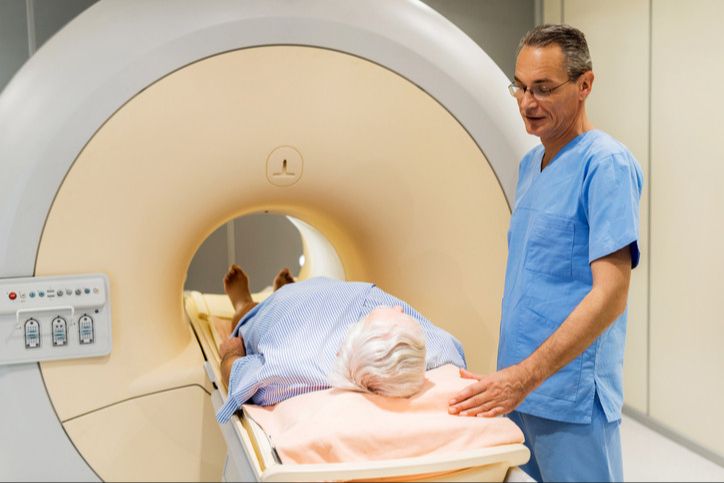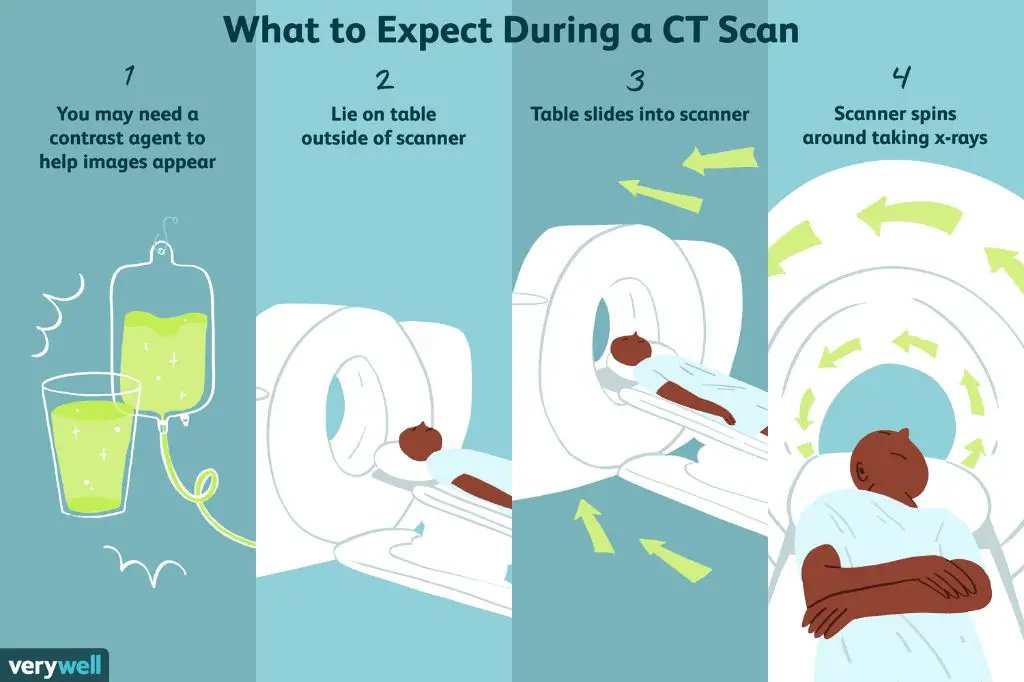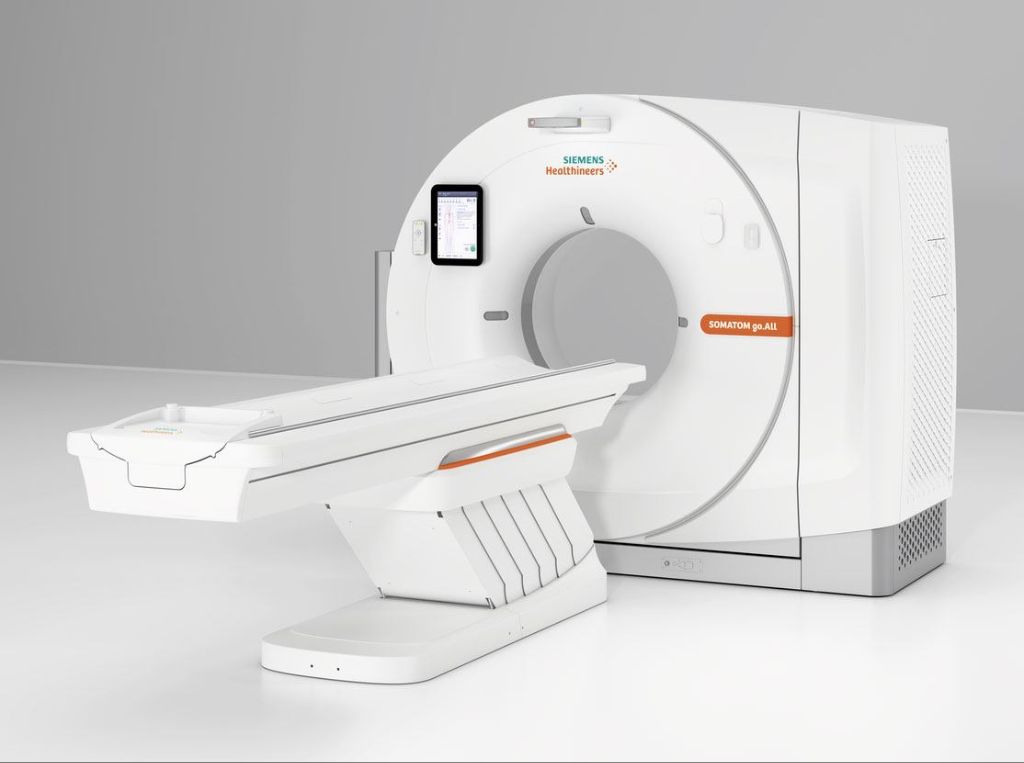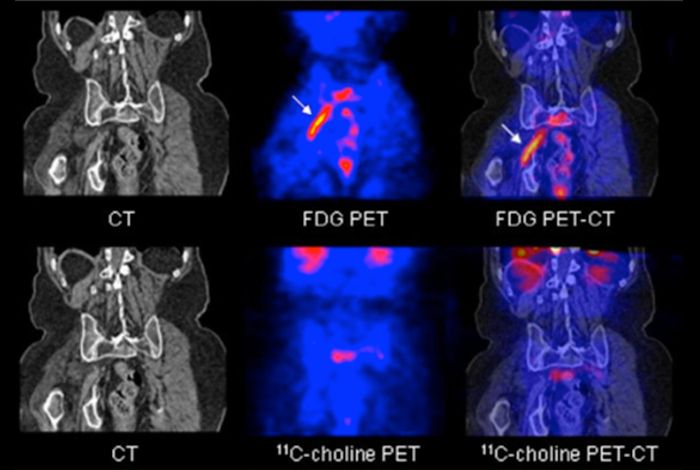What is a CT or CAT Scan?
A CT scan, also known as computed tomography or CAT scan, is a diagnostic imaging test that uses X-rays and a computer to create detailed cross-sectional images of the body (Mayo Clinic, https://www.mayoclinic.org/tests-procedures/ct-scan/about/pac-20393675). It is one of the most common radiology tests performed.
During a CT scan, the patient lies inside the CT scanner machine while an X-ray tube rotates around the body. The X-ray tube emits narrow beams through the body as it rotates, capturing multiple X-ray images from different angles. The images are processed by a computer, which combines them to create cross-sectional views or “slices” of the internal organs and tissues (NIBIB, https://www.nibib.nih.gov/science-education/science-topics/computed-tomography-ct).
CT scans are used to diagnose and monitor diseases or injuries by allowing doctors to see inside organs, blood vessels, bones and tissues in great detail. They can detect abnormalities like tumors, fractures, blood clots, bleeding, and infection. CT scans are performed on various parts of the body like the head, neck, spine, chest, abdomen, pelvis, and limbs.
Do CT Scans Use Radiation?
Yes, CT scans do utilize radiation in the form of X-rays to generate cross-sectional images of the body (1). X-rays are a type of ionizing radiation, which means they have enough energy to potentially cause damage to DNA and cells in the body (2).

The amount of radiation emitted during a CT scan depends on the type of CT scan being performed and the part of the body being imaged. A chest CT scan typically involves more radiation than an x-ray of the chest, for example (1). However, technology advancements in recent years have enabled CT scanners to utilize lower radiation doses while still producing high-quality images (2).
Overall, the level of radiation exposure from a single CT scan is generally low. But it’s important to weigh the benefits versus potential risks, especially forrepeat or unnecessary scans.
Sources:
(1) https://www.cdc.gov/nceh/radiation/ct_scans.html
(2) https://www.health.harvard.edu/cancer/radiation-risk-from-medical-imaging
Amount of Radiation in CT Scans
CT scans use X-rays to take detailed pictures inside the body and therefore expose patients to radiation. The amount of radiation varies significantly depending on the type of CT scan.
According to the FDA, a CT scan of the abdomen and pelvis delivers about 10 mSv of radiation. A full body CT scan can deliver 11-22 mSv. In comparison, a CT colonography delivers about 6 mSv, while a head CT scan delivers only 2 mSv.
To put this in perspective, the average person receives about 3 mSv of background radiation annually just from natural sources in the environment. A single abdomen/pelvis CT scan thus delivers 3-4 years worth of natural background radiation.
Furthermore, other imaging tests like X-rays and mammograms deliver 0.1 mSv or less. So a CT scan involves much higher amounts of radiation than conventional X-rays.
While CT scan radiation is considered “low-dose”, the cumulative effects of multiple CT scans over a lifetime may increase cancer risk. However, the benefits of diagnosing medical conditions often outweigh these potential risks.

Risks of CT Scan Radiation
CT scans use ionizing radiation, which has been shown to increase the lifetime risk of developing cancer (Harvard Health). The amount of radiation in a single CT scan is much higher than a typical x-ray. While the risk of any one CT scan causing cancer is small, this risk accumulates with each additional CT scan a person receives (FDA).
According to the American Cancer Society, the increased cancer risk from a CT scan is estimated to be 1 in 2000 for a single abdomen/pelvis CT scan for a 40 year old. The risk is higher for children due to their developing bodies being more sensitive to radiation (American Cancer Society). While the risk is still low, unnecessary CT scans or too frequent scanning should be avoided.
Other potential risks of CT radiation exposure include skin redness or burns, hair loss in the scanned area, and an increased risk of leukemia or brain tumors in children (FDA). However, these risks are rare at the dose levels used in diagnostic CT scans.
Reducing CT Scan Radiation Exposure
While CT scans involve much higher radiation exposure than regular X-rays, there are ways to reduce the risks through smarter use of technology and careful patient screening.
Newer CT scanners are equipped with dose-reduction features like automatic exposure control, iterative reconstruction, and beam modulation which can reduce radiation dose by up to 50-75% compared to older CT models [1]. Shielding sensitive organs like the thyroid, eyes and breasts that are not being directly scanned can also limit exposure.

However, the most effective way to reduce CT radiation is to only use it when absolutely necessary. Alternatives like ultrasound or MRI involve no ionizing radiation and may be feasible for certain diagnoses. Doctors should carefully weigh the benefits vs potential risks and avoid excessive “just in case” CT screening.
Benefits vs. Risks of CT Scans
CT scans provide significant benefits that often outweigh the small potential risks. They can be lifesaving by enabling physicians to diagnose conditions that may otherwise go undetected.1 The level of detail in CT scan images allows doctors to find tumors, internal bleeding, strokes, and other deadly medical issues.
However, the radiation used in CT scans does carry a slight increase in cancer risk over a lifetime.2 This risk is cumulative and increases with multiple scans. Children are at higher risk than adults due to their developing bodies and longer remaining lifespan.
Patients and doctors should carefully weigh the benefits against the small cancer risks for each individual situation. CT scans with high diagnostic value that can detect life-threatening conditions may be worth the small risk. But they should be avoided if the diagnostic information is unlikely to significantly change the course of treatment or outcome.
Alternatives to CT Scans
In some cases, other imaging modalities like ultrasound or MRI can serve as effective alternatives to CT scans. This is especially true when trying to reduce radiation exposure from medical imaging.
Ultrasound uses high-frequency sound waves instead of radiation to produce images. It is often used to look at soft tissues and organs like the liver, kidneys, spleen, ovaries, eyes, gallbladder, pancreas, bladder, and others. Ultrasound is safe, non-invasive, and does not use ionizing radiation. It can be preferable to CT scans for pregnant women and children. However, ultrasound may not produce images as detailed as a CT scan for some applications.
MRI (magnetic resonance imaging) also does not use ionizing radiation. It employs powerful magnets and radio waves to generate very detailed images of soft tissues, organs, bones, joints, ligaments, and more. The advantages of MRI over CT include better visualization of structures with soft tissue contrasts, blood vessels, and nerves. MRIs can take longer than CT scans though, and may not be suitable for patients who are claustrophobic or cannot lay still.
Overall, for many abdominal and muscle/joint related imaging needs, ultrasound and MRI present excellent alternatives to CT scans without the risks of radiation exposure. Talk to your doctor about whether an ultrasound, MRI or other modality might serve as a safer substitute for your specific imaging needs.
Summary
CT scans are medical imaging tests that create detailed pictures of the inside of the body using X-rays and a computer. They are sometimes referred to as CAT scans.
CT scans do use radiation in order to generate the images. The amount of radiation varies based on the type of CT scan, but all CT scans involve some exposure.
There are potential risks from the radiation exposure, including a slightly increased lifetime risk of developing cancer. However, for most people, the benefits of having a medically necessary CT scan outweigh these potential risks.
There are ways to reduce radiation exposure from CT scans when possible, like adjusting scanner settings based on a patient’s size and limiting repeat scans. But CT scans can provide valuable medical information that helps doctors diagnose conditions accurately.
Overall, CT scans involve a low level of radiation exposure that carries a small increase in cancer risk. But patients and doctors can weigh this risk against the benefits of the test to make informed medical decisions.
FAQs
What is the difference between a CT scan and an X-ray?
A CT or CAT scan uses multiple X-ray beams and advanced computer processing to create cross-sectional images of internal organs and tissues. An X-ray uses a single X-ray beam to create a flat, shadow-like image of dense tissues such as bones.
How much radiation is in a CT scan versus an X-ray?
A CT scan involves much higher radiation exposure than a typical X-ray. The radiation dose of a CT scan is 100 to 500 times higher than conventional X-rays.
Are there any risks from CT scan radiation?
There are small potential risks from CT scan radiation, including increased lifetime cancer risk. However, the medical benefits of a medically necessary CT scan almost always outweigh these small risks.
How can I reduce radiation exposure from a CT scan?
Only get a CT when it is medically recommended by your doctor. Make sure the CT facility uses safe techniques to minimize radiation dose. Drink extra fluids before your scan to maximize kidney function and clearance of contrast dye.
Are there alternatives to CT scans?
Depending on the medical need, alternatives may include ultrasound, MRI or PET scans, which do not use ionizing radiation. However, CT is still the best imaging test for certain conditions and injuries.
Conclusion
CT or CAT scans are medical imaging tests that use x-rays and computers to generate cross-sectional images of the body. They provide detailed views of organs, bones, soft tissues, and blood vessels. While CT scans have many benefits in diagnosing medical conditions, they do expose patients to ionizing radiation.
The amount of radiation from a single CT scan is much higher than conventional x-rays. However, the risk of developing cancer from CT radiation is low for most patients. Those at highest risk are children and individuals who undergo multiple CT scans.

There are ways to minimize radiation exposure from CT scans when they are medically necessary. This includes using optimal scanning parameters, shielding sensitive organs, and following pediatric protocols for children. Patients should discuss the risks and benefits of CT scans with their doctors.
The main takeaway is that CT scans provide valuable medical information to aid in diagnosis, but should be used judiciously and only when their benefits outweigh the small potential risk from radiation. Patients should educate themselves on the radiation dose and discuss alternatives with their healthcare providers when appropriate.

